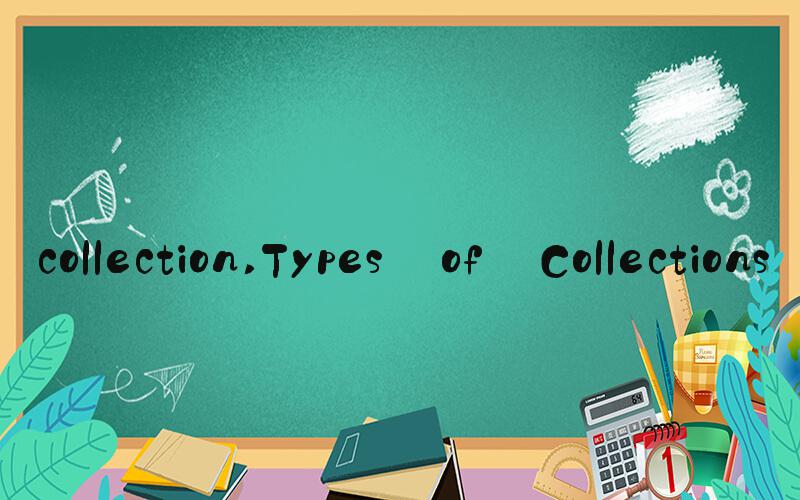AI答案
 Introduction: What is a Collection?
Introduction: What is a Collection?A collection is a group of objects or things that are similar in nature and are brought together for the purpose of study, display, or preservation. Collections can be found in a variety of settings such as museums, libraries, and archives where they are used to document and showcase the history, culture, and achievements of a particular group of people or time period.
However, collections can also be found in our everyday lives. From stamp collections to music collections, people have been collecting things for centuries as a hobby or personal interest. In this article, we will explore the different types of collections, their significance, and how they enrich our lives.
Types of CollectionsThere are countless types of collections that exist, but some of the most common include:
Art collections: These are collections of artwork, ranging from paintings and sculptures to prints and photographs.
Antique collections: These collections consist of items and objects from the past, such as furniture, jewelry, or books.
Natural history collections: These collections document the natural world, including plants, animals, and fossils.
Memorabilia collections: These collections are focused on items of personal significance, such as autographs or sports memorabilia.
Literature collections: These collections include books, newspapers, and magazines, often focusing on a particular genre, author, or time period.
The Significance of CollectionsCollections serve an important role in preserving and documenting history, culture, and art. They give us a glimpse into how people have lived, worked, and created throughout history and allow us to better understand our past and present.
Collections also have great personal significance. For many collectors, their collections represent a passion or interest that brings them joy and fulfillment. Collecting provides a sense of accomplishment and enables individuals to develop specialized knowledge in a particular area. Additionally, collections can serve as a means of connection between people with shared interests, leading to the formation of communities and networks.
Challenges in Collection, Management, and PreservationWhile collections provide numerous benefits, there are also challenges associated with their collection, management, and preservation.
Issues such as funding, storage, and conservation can pose significant obstacles in maintaining collections. Faced with limited resources and space, many institutions struggle to properly maintain and adequately display their collections. Additionally, collections require careful curation to ensure their continued relevance and value. As new technologies and cultural shifts take place, institutions must also adapt to keep their collections up-to-date and accessible to future generations.
Collections in the Digital AgeThe digital age has revolutionized the way in which collections are created, managed, and accessed. Digital collections allow for greater access to materials, as well as increased efficiency in cataloging and preservation efforts. Additionally, the internet has provided a platform for online communities where collectors can share their interests and knowledge with others around the world.
However, the digital age also presents new challenges for collection managers, such as ensuring the authenticity and integrity of digital materials and maintaining compatibility with evolving technologies.
ConclusionCollections have played a significant role in documenting and preserving our history, culture and art, as well as providing joy and meaning for collectors. However, the challenges associated with collection management and preservation underscore the importance of continued attention and care towards these valuable materials. Despite these challenges, the digital age offers exciting new possibilities for collections and their access, making it possible to share these treasures with people across the globe.
